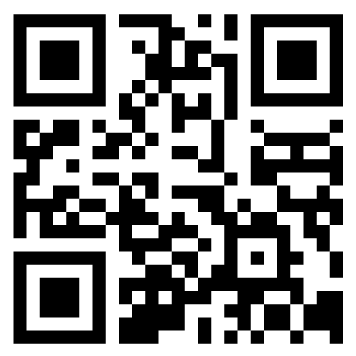It is said that expressing our emotions is good for us. However, there will be instances that which the emotion that we feel could affect us. Anger, in particular, is known to be quite spontaneous and dangerous if not controlled properly. You may yell at someone innocent, you may break something, you might even make a hasty decision only to realize that something better could have been done.
Well, it is safe to say that you aren’t the only one that experiences this. We all have lost control over our emotions at one point. What is more important is that you try to put in the effort to keep them in check and do things differently.
This feeling is meant to inspire you, so why not use it to your advantage and channel your rage in a constructive direction? There are countless movies, books, and novels that depict this and demonstrate how effective rage can be as a motivator. There have been several real-life examples when the rage of the multitude has resulted in a revolution.
What happens to our bodies when we are angry?
You are well aware of the possible reactions one might have when they are angry. However, there are a few physiological changes that take place as well.
Emotions arise as a result of our brains’ processing of memories and prior experiences to assess the gravity of a situation. If it is comparable to anything unpleasant we have experienced in the past, we experience discomfort as a means of protecting ourselves from being injured again and remembering that scenario for future reference.
Unfamiliar and highly emotional events result in distinct patterns of neuronal activity in our brains than when we are calm and safe. The hypothalamus causes the production of stress hormones, and the sympathetic nervous system enters “fight or flight” mode, with adrenaline and cortisol coursing through the body.
What to do when we are angry?
When we are angry, we tend to act impulsively and unexpectedly. We imagine doing things that we never actually implement. However, we are so emotionally charged that we give short shrift to the social norms that would normally govern our ideas, behaviors, and decisions. For the smaller annoyance, watching a funny video or having a piece of chocolate is enough to shrug off whatever you are feeling.
However, it’s far more difficult to control your anger when you’re having a heated argument with someone like your spouse, a friend, a coworker, or some very unfortunate individual working at the call center. We will walk you through how to channel your anger and the different methods you could adopt.
- Recognize your anger
Understand what you are feeling. You are bound to see more physical changes than cognitive changes when you are angry. Anger frequently causes physical changes in our bodies, such as muscular tension, such as a stiff, painful neck, a fast heartbeat, or quick and shallow respiration.
Feeling tired or heated for no apparent cause might be a symptom of unacknowledged rage. If you’re not physically feeling it, you might be able to hear it in your voice. Listening to the loudness of your voice is one method to tell whether you’re growing irritated. Is it getting worse? That is an indication that your emotions are escalating and may suggest that you are becoming furious.
When you notice this, try modulating your voice. Just as increased anger can equate to a louder voice, so can the contrary. Try progressively dropping your voice in response to your loud voice. This is a great technique for emotionally calming yourself down.
- Is it worth expressing anger?
Expressing yourself can indeed be beneficial. However, not in all situations. There are several circumstances in which expressing your discontent would not benefit anyone. The first step toward a healthy relationship with your anger is to learn to distinguish between these two circumstances.
Recognize the distinction between situations that you can influence and those that are out of your hands. For example, If you’re on a trip and you lose your shoes on the first day, there’s nothing you can do about it, so expressing your rage is pointless.
However, if you’re negotiating with a shopkeeper at a bazaar over the price of a dress and you’re upset because you were given a greater price than the last customer, you have some control.
Our memories and imaginations can be pushed to the surface and run in overdrive and we can push past the usual thresholds of our creativity levels.
Finding an activity that gets you away from what is making you furious and allows you to release it is one option. Exercise is a usual release, but anything that occupies your thoughts through physical activity, from a brisk stroll to an engaging video game, might work well. As a final option, you might attempt writing by hand.
Try to think about what you want to change and what challenges you want to address. This is the time when creativity truly takes off. Don’t push it, but while you’re performing your chosen activity, think about some of your challenges and goals.

Perhaps it’s a new venture, a habit change, a work shift, a trip you’ve always wanted to take, or a new business concept. Maybe it’s even the source of what’s causing your rage in the first place.
- Try to reason with yourself
Most of the time, rage is a “secondary emotion” that we employ as a mask or protection for a completely other sensation (shame, for instance, or embarrassment). If you can bring true understanding to the actual feelings, you can adopt an outsider’s perspective and figure out why it’s happening.
You’ll get insight into your unmet needs once you’ve recognized what’s actually fueling your anger: Maybe you lashed at a coworker for asking a basic question, not because you believe they’re incapable, but because you’re usually feeling frustrated with your own job.
Once you’ve identified the true emotions at work, you may convey them to the individual you yelled at.
- Time out whenever you need to
In the heat of the moment, you might not be able to articulate your thoughts and spit fire at the other person. Request a personal timeout. Walking away allows you to collect your thoughts and cool down before replying. This also helps to reduce anger and de-escalate the issue.
A timeout enables you to reflect on the real trigger that caused the anger, which aids in recognizing the trigger and preventing it from happening again.
Of course, don’t just walk away from the dispute. Let anyone you’re speaking with know that you just need some breathing room. Otherwise, your behavior might be interpreted as passive-aggressive.
- Keep a ‘speed limit’
Too much rage, like racing too rapidly along a curved road, is perilous. To avoid pushing the issue into the danger zone, use this approach created by psychologist John Riskind.
Look in with yourself often to see if your anger is rising, falling, or remaining steady in the present scenario. Assign a number and even a few descriptive phrases to represent the intensity of your rage for a thorough self-examination. You might rank it on a scale of one to ten, with one being a tranquil cruise and ten being an explosive reckless sprint into confrontation.
Whenever your anger exceeds your specific “speed limit” for controlling, you must calm down. Visualizing yourself using the brakes might be beneficial. Take note of how your anger fades and your attitude toward the other person begins to alter.
- Change the topic
If you or your partner/coworker/friend are still agitated, changing the subject of the discussion can also be a helpful approach to dealing with your anger in the present.
Ruminating on the person or thing that made you furious might sometimes make you even more upset. Changing your focus can help you change your mood and how you respond.
If the situation is tense, shifting the subject will change the course of the dialogue as a whole. What is the simplest method to accomplish this? Make a joke and redirect the conversation to a safe, peaceful, and pleasurable environment. If you were debating anything significant or that needed to be addressed eventually, put it off until later or the next day when calmer heads prevailed.
Anger is a complicated emotion that’s regularly misconstrued. Yet, we can use anger as a helpful messenger, a spark to take significant action, or a tool to improve our relationships and our lives.
Just like all the other emotions, anger is transitory. It will have to pass, and it will. As a result, it’s critical not to cling to it for too long. Hanging on to anger can eventually eat you up on the inside. Rather, try expressing yourself through recreational thinking or by burning it out.
When it comes to anger management, don’t hesitate to ask for some assistance. People need a different perspective to identify why they experience excessive rage and understand the underlying issues. Getting help ensures you find your balance sooner and learn healthy coping mechanisms. The key is to harness your anger, to channel it.
Related Article: 5 Secrets to Help You When Dealing With Angry Family Members





